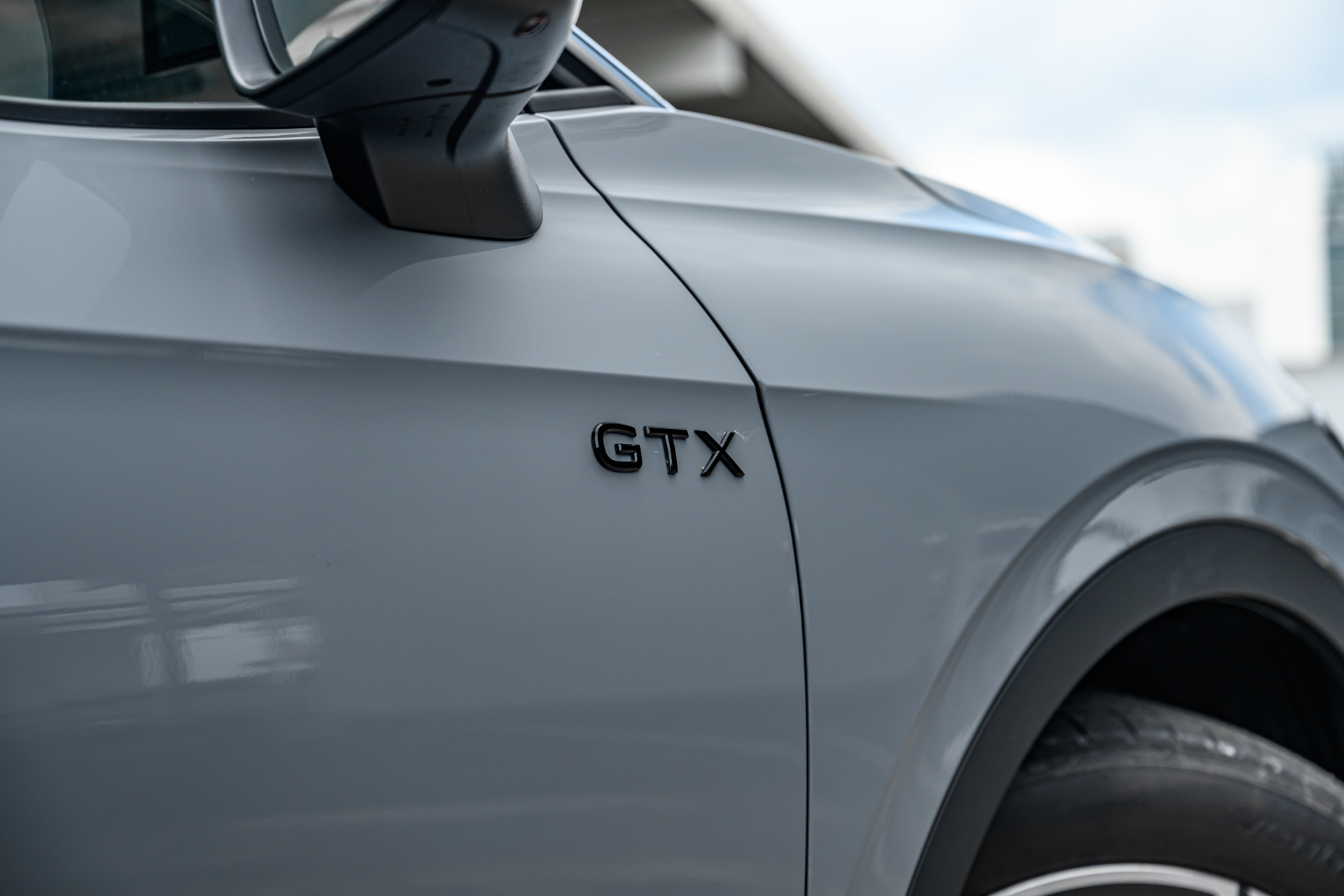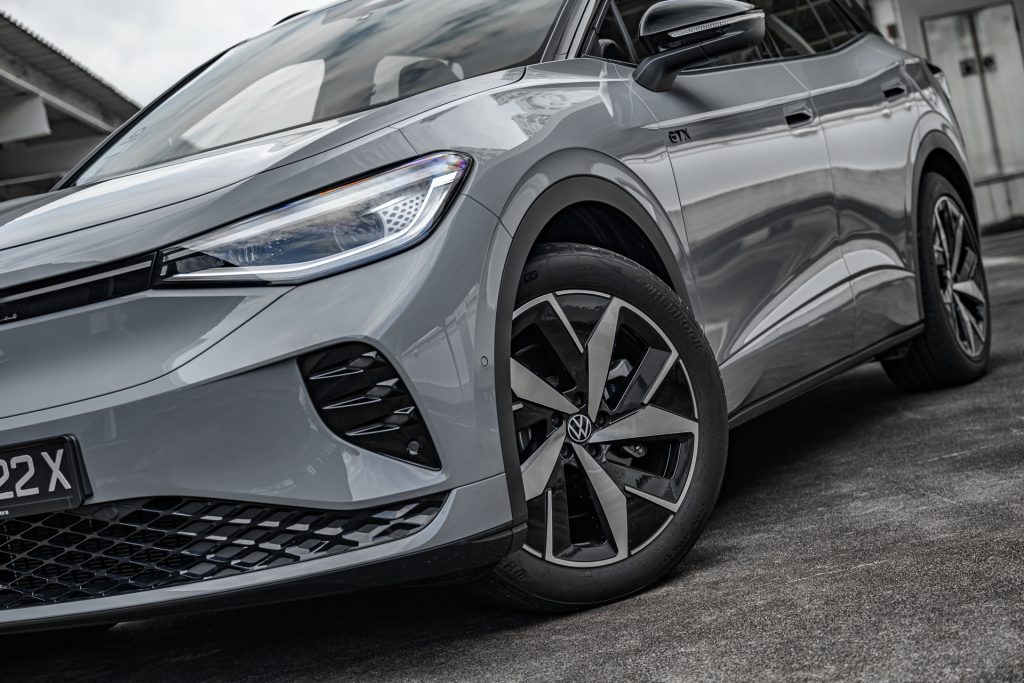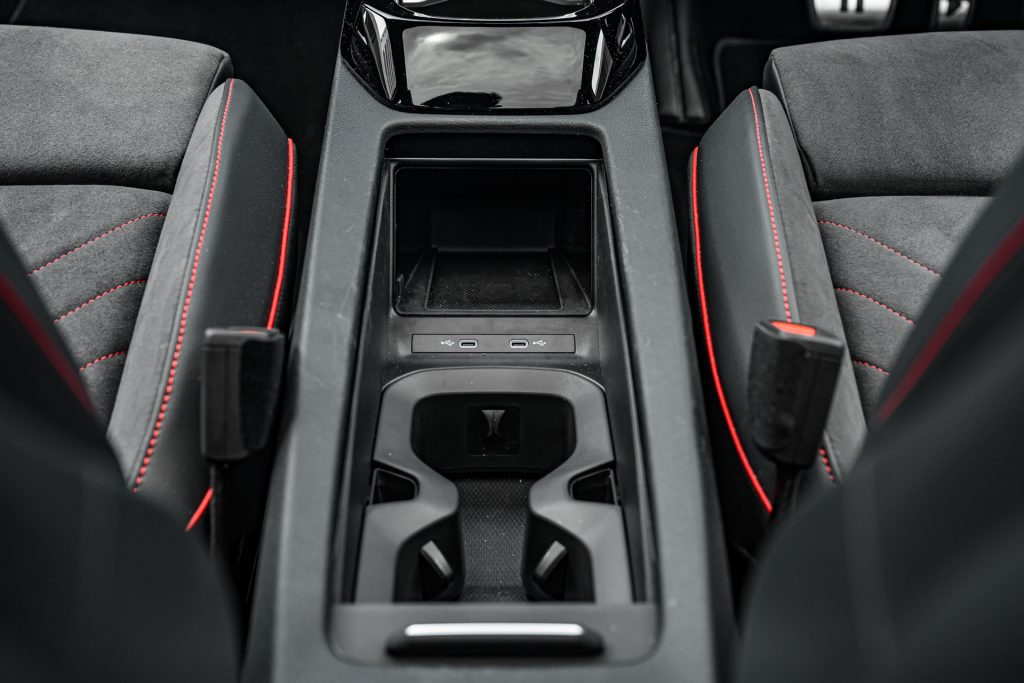While the regular Volkswagen ID.4 hits the mark as a family carrier, the GTX variant does isn’t as thrilling as it should be.
The ID.4 GTX is essentially Volkswagen’s first electric performance car, and it also introduces the company’s new ‘GTX’ badge. Think of it as the electric equivalent of the iconic ‘GTI’. No pressure then.
But, unfortunately, I’m not sure if it can live up to the fame that previous GTI models celebrated in the past.
it definitely is fast.

As with any EV, the response from the accelerator is immediate, delivering smooth and controllable power. It won’t jolt you with the same neck-snapping acceleration as some performance EVs, but I will take smooth over nauseous any day of the week. And there’s more than enough power to slide and dice through traffic.
The extra motor up front boosts power to 335bhp, up from 282bhp in the regular variant, slashing the 0-100 km/h time to 5.4 seconds. Interestingly, both trims share the same 545Nm of torque.
but it isn’t as thrilling.

Despite the performance boost, the GTX doesn’t feel dramatically different from the standard model. There is a 4WD traction mode, handy for escaping slippery situations, but for most drives, you’d probably prefer the extra range of the less powerful versions.
You would think the GTX would offer more customisation options for the different drive modes, but Volkswagen has kept things simple with the ID.4: no variable regen options, just straightforward D and B modes.
Even in B mode, which stands for brake, like its regular single-motor counterpart, regenerative braking isn’t overly aggressive. The brake pedal feels progressive though, offering more regen at the top of its travel.

In Sport, the steering feel feels too light, and it does not provide you with confidence during hard cornering, beckoning you to ease off from the fun pedal.
A slight bummer, since the ID.4 GTX can actually hold itself decently in a tight corner. It might understeer mildly at lower speeds, but with more power being sent to the rear, it handles quite neutrally. Even the traction control is subtle, ensuring a composed drive without being too intrusive.
it works best as a cruising machine.

The ID.4 GTX works best as a highway cruising machine, eating up the miles whilst being stable and quiet with minimal tyre and wind noise.
Take it off the beaten motorway, and onto fun stretches of B-roads, the ride can start to feel a bit bumpy, with undulations in the road feeling more pronounced, as if the springs are tuned for a full load of passengers and cargo. Even the included Sports Pack does little to keep all of that weight in check.
and it is great on range.

Built on VW’s dedicated MEB platform, Singapore-bound ID.4 GTX models come with an 82kWh battery.
Smooth throttle inputs yield impressive efficiency, with the ID.4 GTX averaging 17.7kWh/100km (5.6km/kWh), remarkable for a dual-motor EV.
You could easily cover at least 450km on a single charge, which is typically enough for a week’s worth of commuting.
it looks decent too.



Like the regular ID.4, there’s something reassuringly familiar about the design of the Volkswagen ID.4 GTX.
The creaseless design is unfussy, and it looks futuristic yet contemporary enough to not alienate itself from the rest of the carpark.
wait, there are no infotainment switches?

Sort of. You do get some haptic switches on the steering wheel, but you’ll quickly notice that the ID.4 doesn’t do physical switches. Like, at all. Your entire interaction with this electric crossover revolves around the big screen in the middle.
The screen itself is a 12.9-inch unit with high-resolution graphics. A group of four pads act as shortcuts to frequently used menus. In practice, the screen works great, though the possible inclusion of wireless Apple CarPlay or Android Auto might be a nice touch in future.
Volkswagen claims the ‘Hello ID’ voice assistant compensates for the screen’s quirks, but not everyone is keen on using voice commands.


Which is where some pain points lie. At the base of the screen, you’ll find volume and temperature sliders that can be tricky to operate, especially if you are just providing subtle inputs.
The capacitive touch controls on the steering wheel share a similar story. They’re too easy to brush against accidentally and lack any significant tactic feel when you are selecting items.
And if you frequently hop out of the car for errands while leaving it “on”, it’s quite infuriating when the car shuts off every time you lift yourself off the seat. There’s no override for this either.
On the bright side, Volkswagen is listening. Some updates have already improved the system, and the company is keen to return to physical buttons in future models.
the silver lining.


The minimalist interior is huge, and there’s ample room even for three adults in the back, thanks to the flat floor. Console storage is generous and modular, with numerous pockets for phones and other items, plus plenty of USB ports.
The ID.4 GTX also adds some GTX-specific badging and stitching to the car, which is a nice touch. The sports seats also look great, with slight bolstering to keep you hugged in the corners. Audio is enhanced with a Harman Kardon sound system, a significant upgrade from the regular ID.4.
Arguably its biggest advantage is the inclusion of the panoramic sunroof, which lets tons of natural sunlight in and gives the cabin a nice airy atmosphere.

The boot offers 543 litres of space, outdoing most rivals. However, it’s a bit inconvenient that the cable storage is under the boot floor rather than in a dedicated space under the front bonnet. This means you need to unload any cargo sitting on top to access the cable.
The ID.4 GTX also comes with Volkswagen’s ‘ID’ light, a strip of LEDs below the windscreen that sweeps left or right as you approach a junction or according to the navigation (though it doesn’t work with Apple CarPlay or Android Auto). This helps alert the driver to changes happening as you drive.
GT Axed?

Sure, it is fast, and yes it is spacious. You will definitely impress your friends with how quickly you can get away from a set of lights.
But, you could do all of that in the regular ID.4; it just seems that this model does not deserve its GTX badging.
I would much rather just call it a dual-motor ID.4 variant, and save the GTX nameplate for something more exciting that Volkswagen can create in the future.

It’s a shame, really. The car looks nice, and the cosmetic touches do add to the overall fanfare.
But, considering the GTX shares 90% of the overall experience with its single-motor sibling, that remaining 10% does not warrant a “must-have” upgrade to it.
Technical Specifications
Volkswagen ID.4 GTX Electric
Powertrain: Dual Electric Motors, All-Wheel Drive
Power: 290kW (389bhp)
Torque: 545Nm
Gearbox: Single Speed (A)
Acceleration: 5.4 Seconds (0-100km/h)
Battery Capacity: 82 kWh
Drive Range: 515 km
Energy Consumption: 4.7 km/kWh (claimed)
Price: S$249,900 with COE (accurate at the time of this article)
Contact: Volkswagen Singapore
Photo Credits: Sean Loo (@auto.driven)
Check out more green rides here, or check out our latest videos on Ignition Labs TV and on TikTok!






